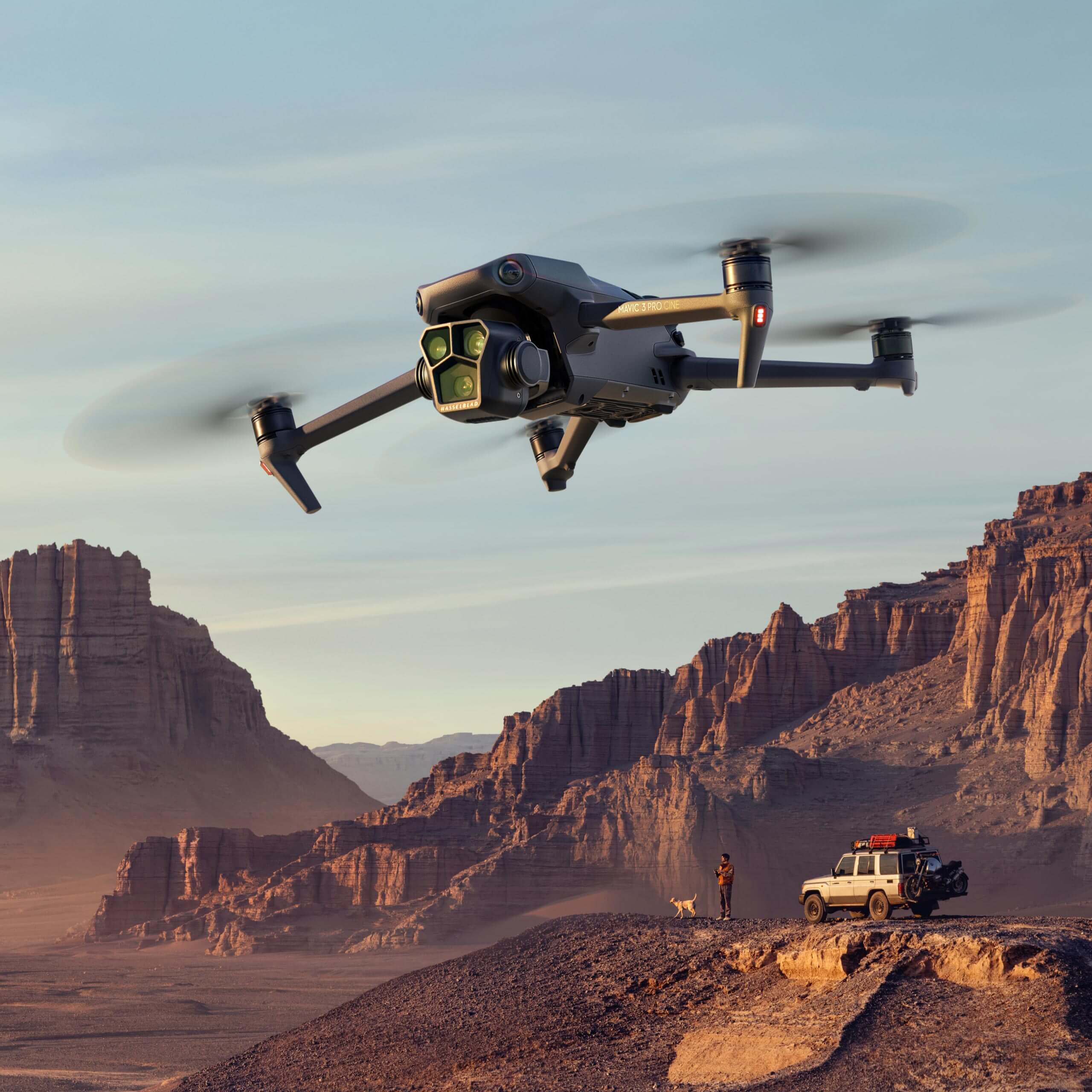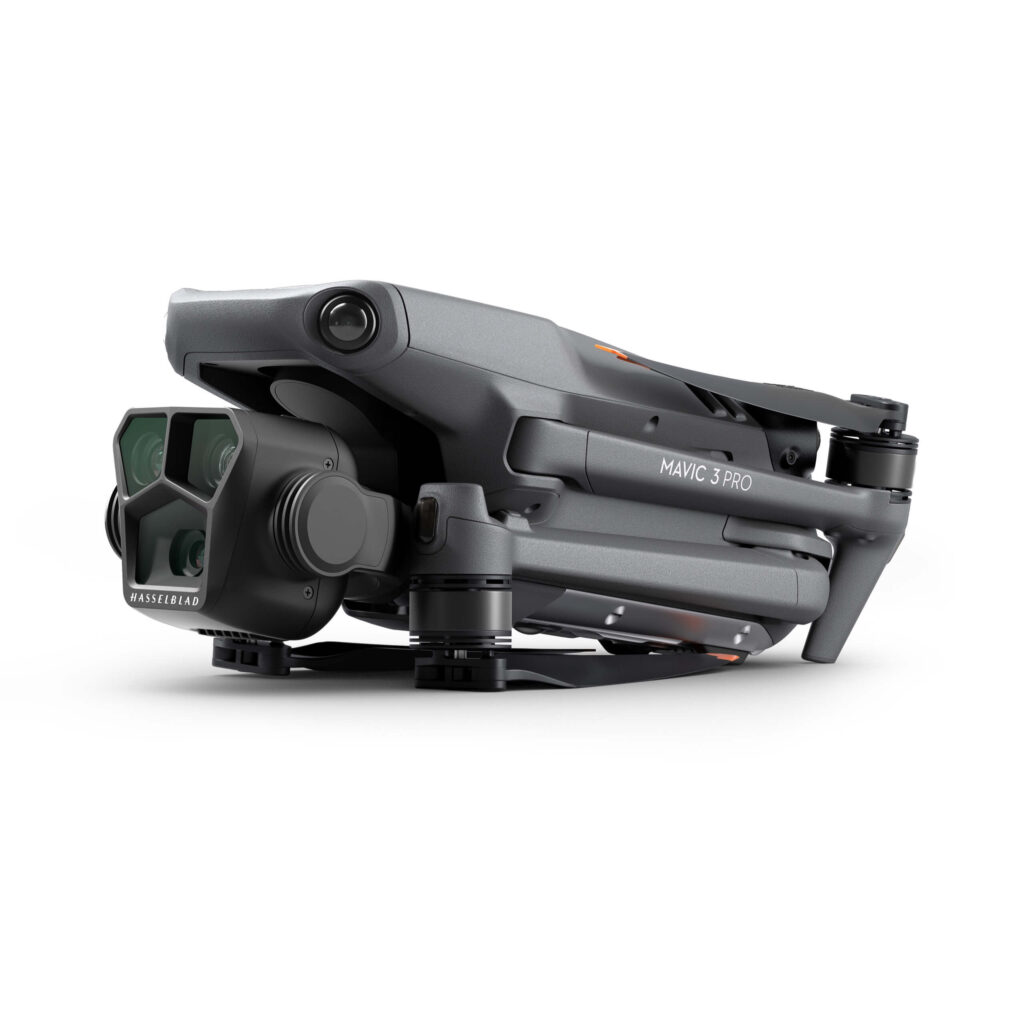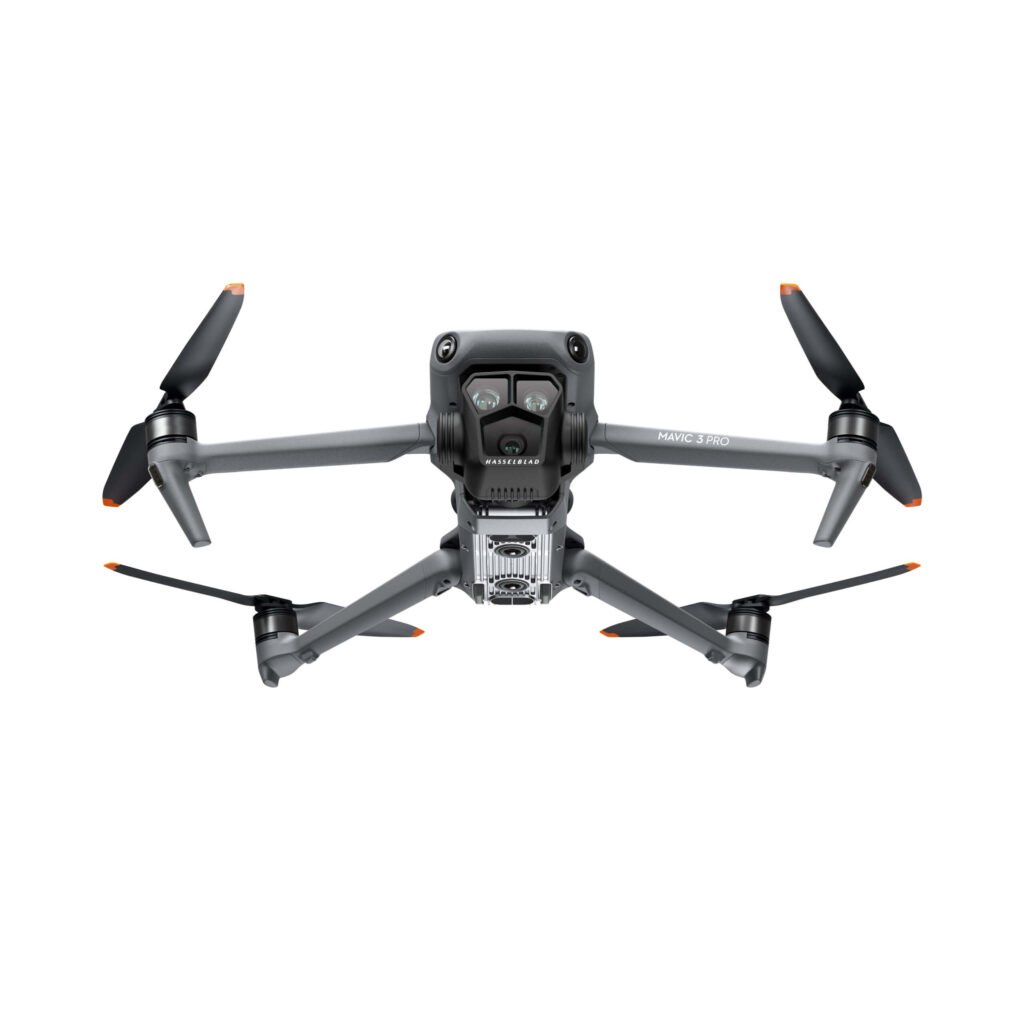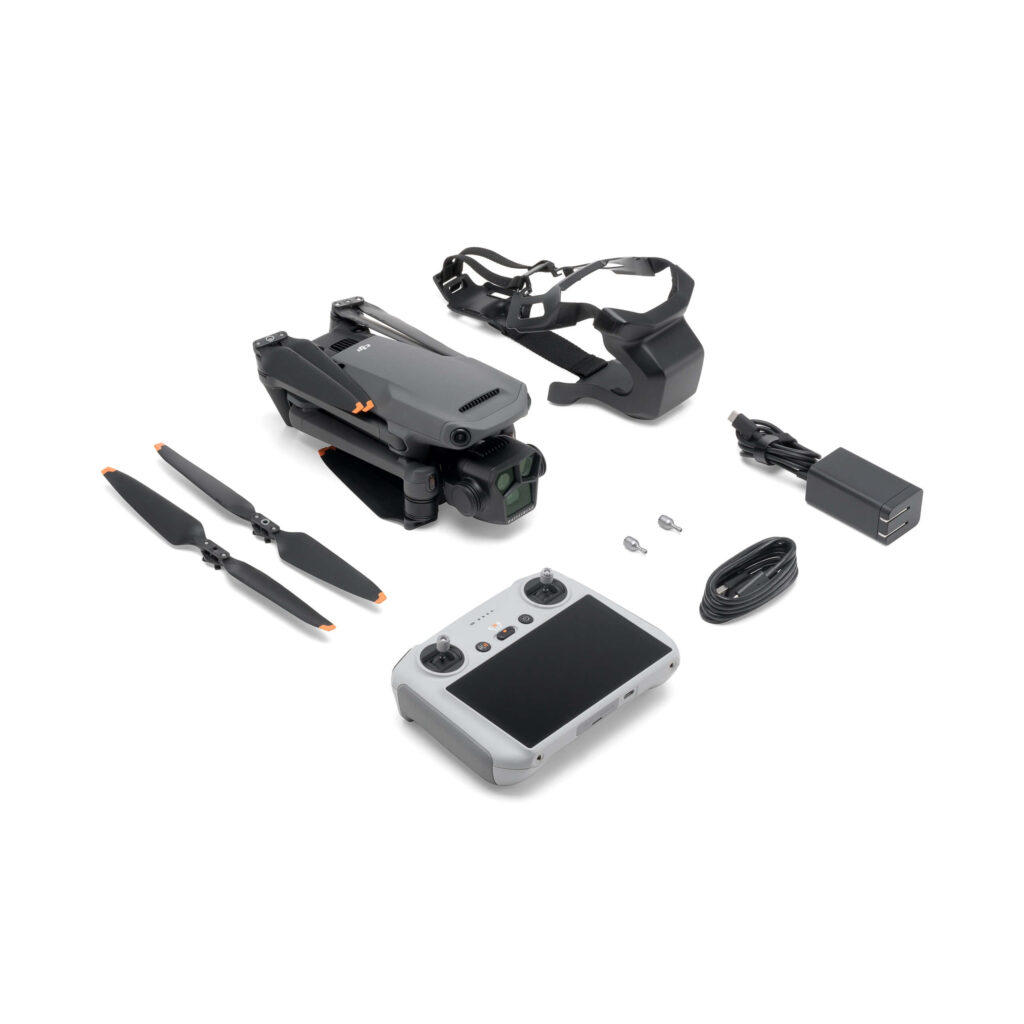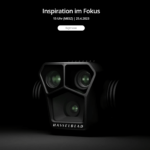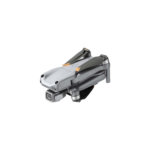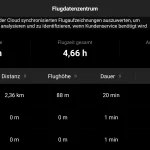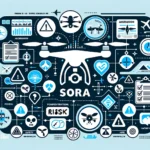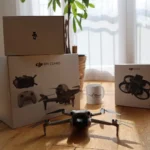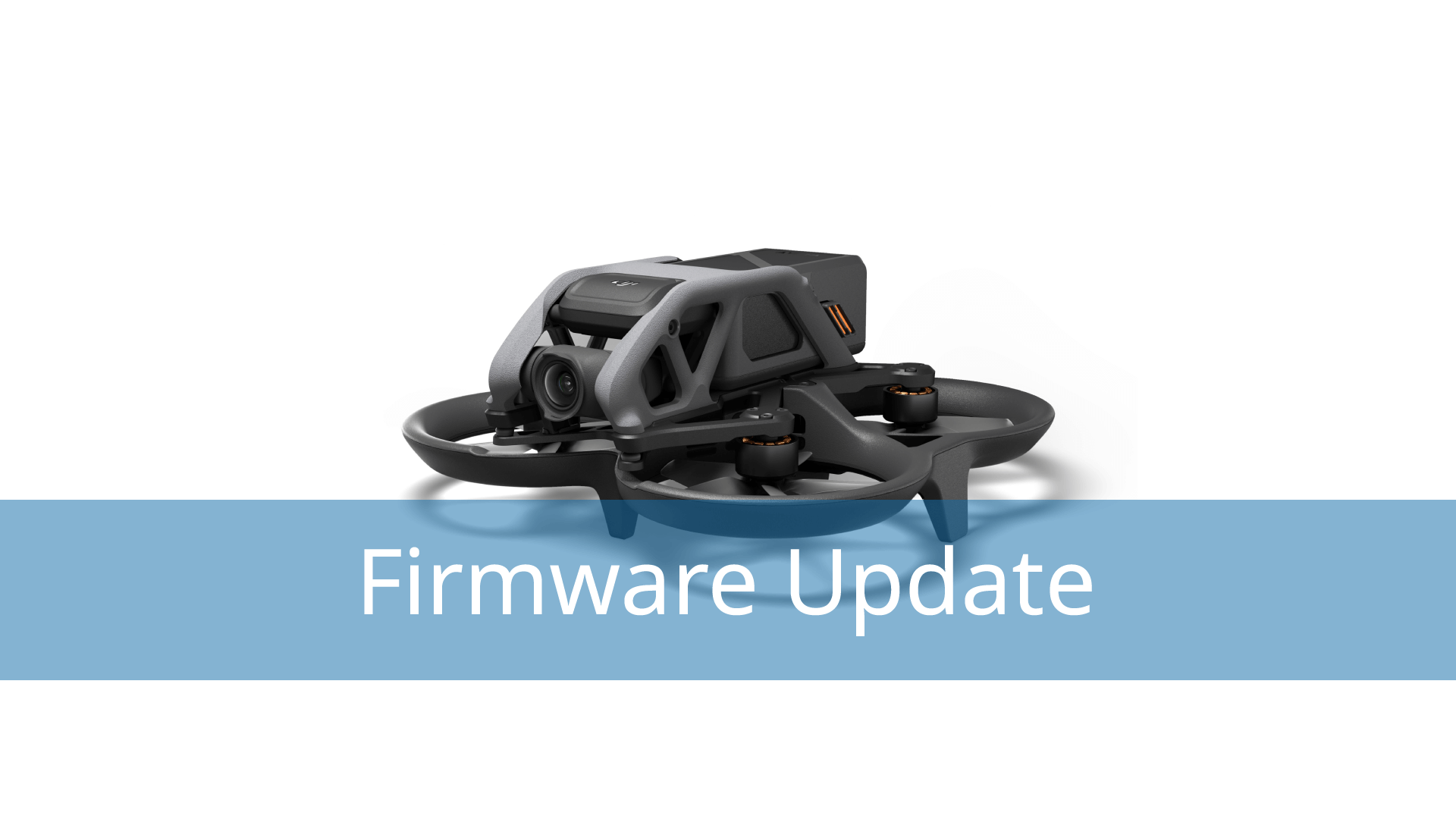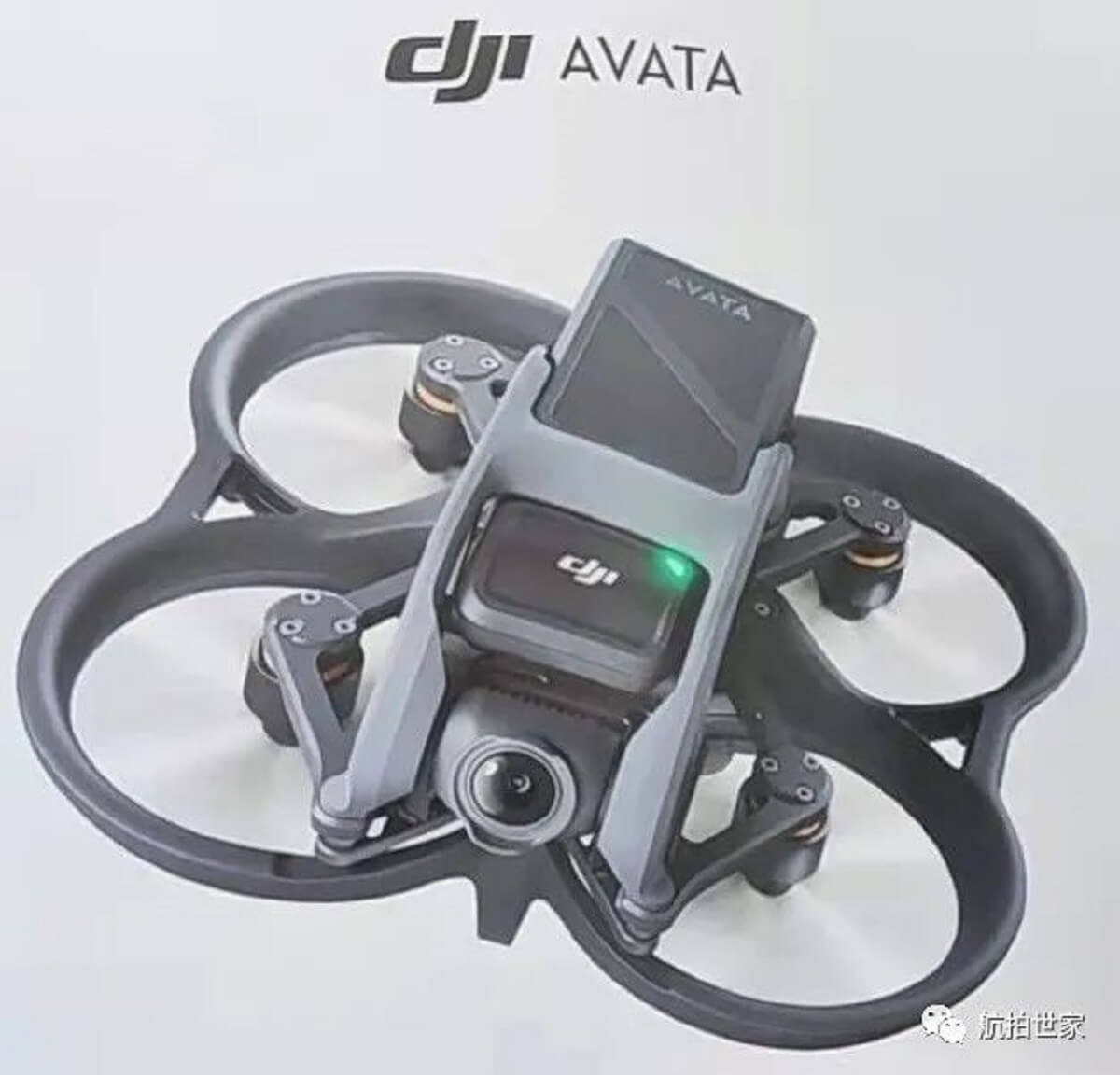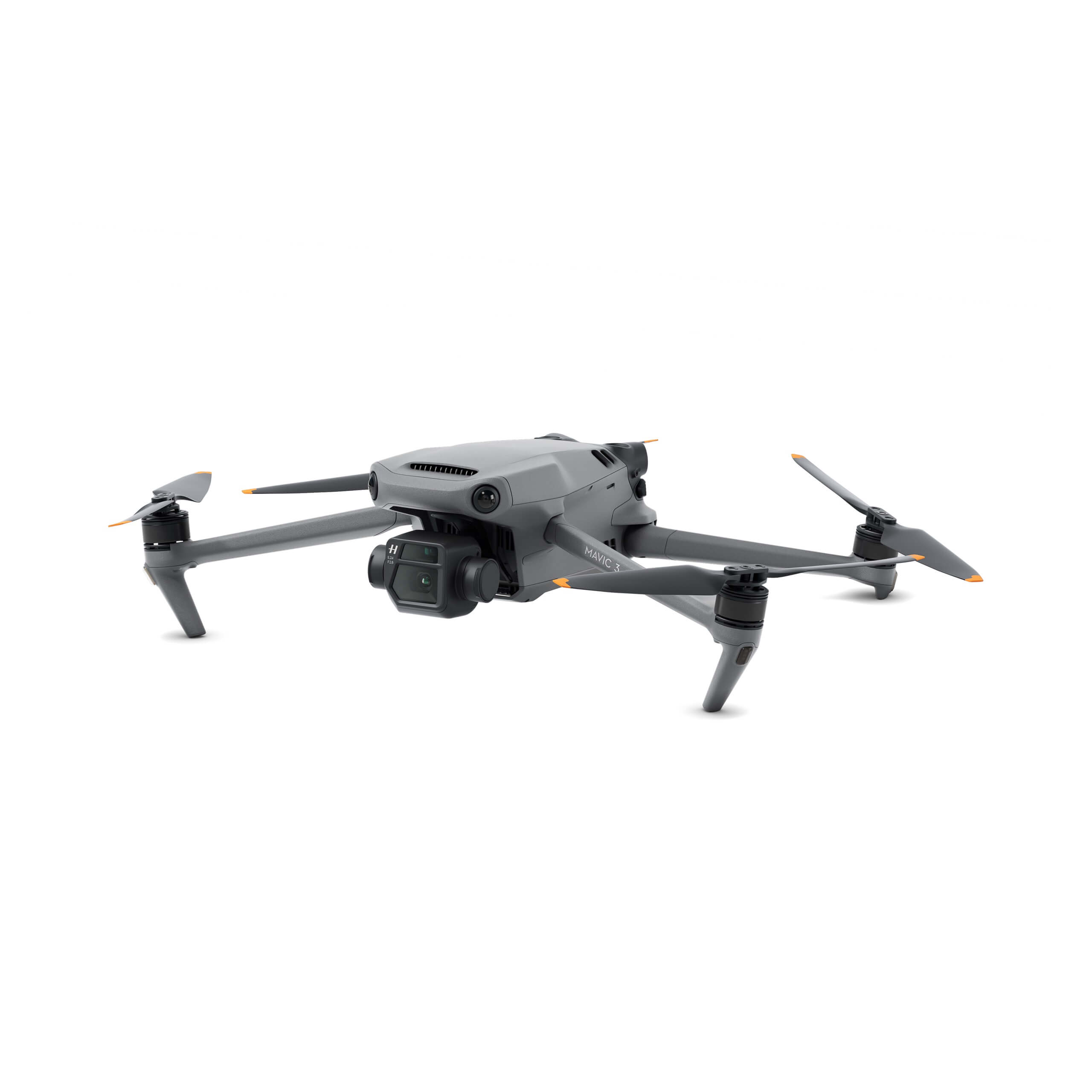DJI has once again unveiled its Mavic 3 Pro on time, officially presenting the first consumer drone with a 3-camera system. In this article we summarise what else the Mavic 3 Pro has to offer.
Even though many photos and details of the DJI Mavic 3 Pro have already been leaked in recent weeks, there has not yet been a complete picture of all the technical data. Therefore, the official presentation of the Mavic 3 Pro was eagerly awaited.
And what can we say: DJI has not disappointed its fans. The Mavic 3 Pro once again delivers a wealth of technology at a very attractive price – considering that this is the Pro series.
Zur Produktseite der DJI Mavic 3 Pro kaufen*
Das ist die DJI Mavic 3 Pro
Mavic 3 Pro design, size and weight
The first thing you notice about the Mavic 3 Pro is that, apart from the camera module, it looks very similar to its siblings. However, due to the size of the camera module, the weight of the Mavic 3 Pro is higher and is now 958g compared to 895g for the Mavic 3. A few grams that make a big difference in the EU. By exceeding the 900g limit, the Mavic 3 Pro falls outside the scope for a C1 label and is therefore officially delivered with the C2 label for drone classes.
The main feature of the Mavic 3 Pro: the 3 cameras
The Mavic 3 Pro features an improved camera unit with three cameras, including a main camera with a 4/3-inch sensor and 5.1K resolution at a maximum of 50 frames per second, as in the previous Mavic 3 and Mavic 3 Classic models. There is also a new 70mm camera with a 1/1.3-inch CMOS sensor and a resolution of 48 megapixels, which can also be used in 12-megapixel mode and records video in 4K at 60 frames per second.
The telephoto camera has been equipped with a new lens with a focal length of 166 mm and an aperture of 1:3.4, which offers a slightly higher magnification and better light intensity. The 12 MP sensor with a diagonal of 1/2 inch remains unchanged, but now also supports 4K at 60 frames per second. The hybrid zoom is still up to 28x.
The Mavic 3 Pro now also uses the additional cameras in some smart shooting modes: the 70mm camera supports FocusTrack and Hyperlapse, while the telephoto camera supports POI and Circle. QuickShots and MasterShots remain reserved for the Hasselblad camera. DJI is also introducing the proprietary 10-bit colour profile DLog-M, which can also be used by the new 70mm camera together with HLG.
Zur Produktseite der DJI Mavic 3 Pro kaufen*
Flight time and flight speed
Due to the increased weight, the flight time of the Mavic 3 Pro drops from 46 minutes to 43 minutes compared to the Mavic 3. Which is still a remarkable value! The maximum flight speed remains unchanged at 75.6 km/h (21 m/s).
Flight altitude and range
The official flight altitude also remains at a maximum of 6000 metres, a value that in practice will never be reached due to legal regulations. The maximum range is given by DJI as 15km.
Battery
It is pleasing that DJI uses the same batteries for the Mavic 3 Pro as for the other Mavic 3 models. So the batteries are compatible between the models. The LiPo 4S battery has a capacity of 5,000 mAh and a weight of 335.5g. This is also the explanation why the flight time has dropped a little compared to the other models.
Controls of the DJI Mavic 3
The Mavic 3 Pro comes in the normal and the Fly More Combo version with the DJI RC remote control. In addition, the Fly More Combo package is also available with the DJI RC Pro. This controller is also included in the Cine Premium Combo.
App
The DJI Mavic 3 Pro also uses the DJI Fly app for control, which has been extended with a corresponding update for the new model.
Zur Produktseite der DJI Mavic 3 Pro kaufen*
Other special features of the Mavic 3 Pro
There are no big surprises in the other details compared to the previous models in the 3 series. The DJI Mavic 3 Pro is also available in a standard and a cine version. The standard version has 8GB of internal memory, while the cine version has an integrated 1TB SSD. Both models can also be expanded by up to 512GB of additional memory using an SD card (recommended memory cards for the Mavic 3). The Mavic 3 Cine also features support for Apple’s ProRes 422 HQ codec. New to the Mavic 3 Pro is that the ProRes codec can now be used for all available cameras instead of just the main camera.
The drone naturally supports GPS, Galileo and BeiDou. The Mavic 3 also features QuickTransfer, a way to transfer images directly from the drone to a smartphone using Wifi 6.
The Mavic 3 also has an Omnidirectional Obstacle Detection System. This means the drone can detect obstacles in front of it, behind it, below it, above it and beside it.
DJI Mavic 3 price and availability
The DJI Mavic 3 Pro is now available for pre-order online at the official DJI Store. According to the website, delivery will officially begin on 9 May 2023. Other online retailers should follow shortly. In addition, the drone can also be purchased in brick-and-mortar stores. Either at retailers specialising in drones, or typical electronics stores that have pre-ordered the drone early in order to have it in stock right at the start.
DJI indicates the prices for the different models as follows:
- DJI Mavic 3 Pro (DJI RC) – 2.099€
- DJI Mavic 3 Pro Fly More Combo (DJI RC) – 2.799€
- DJI Mavic 3 Pro Fly More Combo (DJI RC Pro) – 3.499€
- DJI Mavic 3 Pro Cine Premium Combo (DJI RC Pro) – 4.599
Zur Produktseite der DJI Mavic 3 Pro kaufen*
Technical data of the DJI Mavic 3 Pro
| Fluggerät | DJI Mavic 3 Pro |
|---|---|
| Abfluggewicht | ca. 958g(Mavic 3 Pro) ca. 963g(Mavic 3 Pro Cine) |
| Maße (ohne Propeller) | Gefaltet (ohne Propeller): 231,1×98×95,4 mm (L×B×H) Ausgefaltet (ohne Propeller): 347,5×290,8×107,7 mm (L×B×H) |
| Max. Flugzeit | ca. 43 Minuten (Windstelle) |
| max. Flughöhe | 6.000 m |
| max. Fluggeschwindigkeit | ca. 75,6 km/h (im S-Modus) |
| Betriebstemperatur | -10° – 40°C |
| interner Speicher | Mavic 3 Pro Standard: 8GB Mavic 3 Pro Cine: 1 TB SSD |
| Betriebsfrequenz | 2,400 – 2,4835 GHz 5,725 – 5,850 GHz |
| Sendeleistung (EIRP) | 2,400 – 2,4835 GHz: FCC: ≤26 dBm CE: ≤20 dBm SRRC: ≤20 dBm MIC: ≤20 dBm 5,725 – 5,850 GHz: FCC: ≤26 dBm CE: ≤14 dBm SRRC: ≤26 dBm |
| Videoübertragungssystem | OcuSync3+ (O3+) |
| Kamera | |
| Sensor | Hasselblad-Kamera: 4/3 CMOS, Effektive Pixel: 20 MP Mittlere Telekamera: 1/1,3-Zoll-CMOS, Effektive Pixel: 48 MP Tele-Kamera: 1/2-Zoll-CMOS, Effektive Pixel: 12 MP |
| Objektiv | Hasselblad-Kamera Sichtfeld: 84° Äquivalente Brennweite: 24 mm Blende: f/2.8-f/11 Fokus: 1 m bis ∞ Mittlere Telekamera Sichtfeld: 35° Äquivalente Brennweite: 70 mm Blende: f/2.8 Fokus: 3 m bis ∞ Telekamera Sichtfeld: 15° Äquivalente Brennweite: 166 mm Blende: f/3.4 Fokus: 3 m m bis ∞ |
| ISO-Bereich | Video Normal und Zeitlupe: 100-6400 (Normal) 400-1600 (D-Log) 100-1600 (D-Log M) 100-1600 (HLG) Nacht: 800-12800 (Normal) Foto 100-6400 |
| max. Bildauflösung | Hasselblad-Kamera: 5280×3956 Mittlere Telekamera: 8064×6048 Telekamera: 4.000 × 3.000 |
| Videoauflösung | Hasselblad-Kamera Apple ProRes 422 HQ Apple ProRes 422 Apple ProRes 422 LT 5,1K: 5120×2700 mit 24/25/30/48/50 fps DCI 4K: 4096×2160 mit 24/25/30/48/50/60/120* fps 4K: 3840×2160 mit 24/25/30/48/50/60/120* fps H.264/H.265 5,1K: 5120×2700 mit 24/25/30/48/50 fps DCI 4K: 4096×2160 mit 24/25/30/48/50/60/120* fps 4K: 3840×2160 mit 24/25/30/48/50/60/120* fps FHD: 1920×1080@24/25/30/48/50/60/120*/200*fps * Aufgenommene Bildrate. Das entsprechende Video wird als Zeitlupenvideo abgespielt. Mittlere Telekamera Apple ProRes 422 HQ Apple ProRes 422 Apple ProRes 422 LT 4K: 3840×2160@24/25/30/48/50/60fps H.264/H.265 4K: 3840×2160@24/25/30/48/50/60fps FHD: 1920×1080@24/25/30/48/50/60fps Telekamera Apple ProRes 422 HQ Apple ProRes 422 Apple ProRes 422 LT 4K: 3840×2160@24/25/30/48/50/60fps H.264/H.265 4K: 3840×2160@24/25/30/50/60fps FHD: 1920×1080@24/25/30/50/60fps |
| Video-Format | MP4/MOV (MPEG-4 AVC/H.264, HEVC/H.265) MOV (Apple ProRes 422 HQ/422/422 LT) |
| Max. Video-Bitrate | H.264/H.265: 200 MBit/s Apple ProRes 422 HQ: 3.772 MBit/s Apple ProRes 422: 2.514 MBit/s Apple ProRes 422 LT: 1750 Mbit/s |
| Digitaler Zoom (nur im normalen Videomodus und im Erkundungsmodus) | Hasselblad-Kamera: 1-3× Mittlere Telekamera: 3-7× Telekamera: 7-28× |
| Weitere Daten | |
| Erkennungssystem | Omnidirektionales duales Sichtsystem, ergänzt durch einen Infrarotsensor an der Unterseite des Fluggeräts |
| Alle technischen Daten der Mavic 3 gibt es auf der offiziellen DJI Seite | DJI Mavic 3 Pro technische Daten |
Conclusion
With the Mavic 3 Pro, DJI has once again delivered a sensible and very good update to the existing models. With the new camera system, DJI is once again setting new standards for drone cameras. The camera covers different areas of application thanks to the different modules, making the Mavic 3 Pro very flexible to use.
The price is also convincing – considering the league in which the Pro series moves and how DJI drones are generally priced.
Whether an update from an existing Mavic 3 to the Mavic 3 Pro is worthwhile is something everyone has to decide for themselves. The decisive factor is, of course, the camera system. If you are planning to buy a new high-quality drone, you should definitely take a look at the Pro version of the Mavic 3.
*The links contained in this article are so-called affiliate links. With these links DeinDrohnenpilot.de gets a commission for mediated purchases. The price does not increase for the customer.


